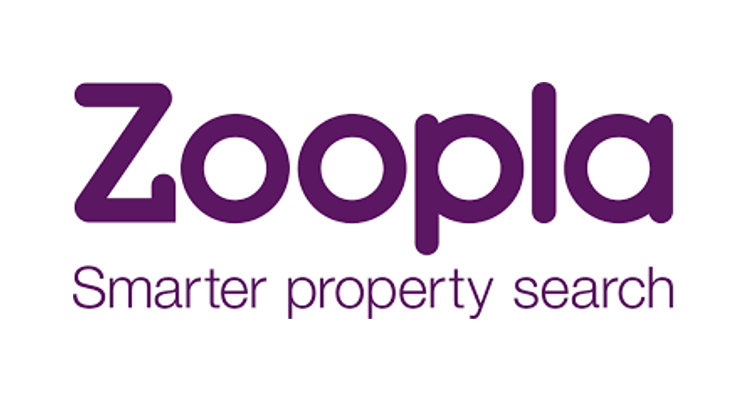Breaking Property News 16/09/25
Daily bite-sized proptech and property news in partnership with Proptech-X.
What’s Shaping Property Management Technology?
Ascendix Analysis – Leading Proptech trends in Property Management in 2025
As we head further into 2025, the property management sector is undergoing rapid technological change. From sustainability mandates to more flexible renting models, operators and tenants alike are expecting smarter, more responsive systems. Below are the top trends shaping the future of property management — and how tech is driving them.
Overview of the Property Management Technology landscape
These are the key trends that are defining the direction of property management in 2025:
AI-powered tools: AI lease abstraction, chatbots, predictive maintenance. Sustainability and smart buildings: Energy intelligence, real-time environmental monitoring, green compliance. “As-a-Service” models: Flexible space, SaaS (software-as-a-service), Data-as-a-Service (DaaS).
Community living and co-renting/co-owning platforms with social & booking features. Growth in mid-term rentals (1-6 months) as a bridge between traditional and short-term rentals. Mobile-first solutions: Tenant portals, inspection apps, document management on the go.
Lastly, Virtual and augmented reality for tours, visualisation and staging. IoT devices: Smart sensors, automation, energy efficiency, security.
Key Areas to Watch
Sustainability & Smart Buildings – Technology is enabling property managers to monitor and control building performance in real time. Smart sensors, automated reporting, predictive maintenance, and energy-intelligence platforms help reduce waste, cut costs, and meet regulatory requirements. Tenants increasingly expect greener buildings and eco-friendly features.
Community Living & Co-Renting / Co-Owning – As affordability is squeezed, more people are choosing shared living arrangements. Tech platforms are responding by including features to evaluate prospective co-renters, manage shared bookings, organize amenities, and streamline communications. This isn’t just about lower cost — it’s about richer shared experiences.
Mid-Term Rentals Become a Sweet Spot – Renters are seeking flexibility that long leases can’t offer, but without the volatility or high cost of night-by-night short-term stays. Mid-term rental management systems support operations like rent collection, cleaning turnover, and maintenance with less friction.
The “As-a-Service” Models – Space-as-a-Service: Flexible workspaces, amenity bookings, event spaces on demand. Software-as-a-Service: Cloud-based platforms for leasing, CRM, property operations — eliminating heavy upfront investment. Data-as-a-Service: Insights from market data, energy usage, occupancy trends, helping operators benchmark and optimise performance.
AI in Operations – AI is changing back-office and front-office workflows: Lease abstraction and document summarisation to reduce manual review. Chatbots for tenant enquiries, maintenance requests, scheduling. Predictive analytics for maintenance and pricing, helping to avoid costly breakdowns or rent vacancies.
Virtual / Augmented Reality & Visualisation – These tools allow prospective tenants to tour properties remotely, visualise changes (furniture, layout, décor), and make decisions more confidently — reducing time and error in the leasing process.
Internet of Things (IoT) – IoT devices and sensors enable smarter energy management, security, and automation. Smart locks, environment sensors, automated alerts for system malfunctions: all of this helps reduce operating costs and improve tenant satisfaction.
Mobile-First Experiences – Mobile inspection tools, tenant portals, document signing, maintenance tracking — users expect to manage most of their property interactions from their phones. Property managers benefit from faster workflows, more immediate updates, and better data capture.
Market Size & Why This Matters
The property management technology market is expanding fast. Starting from approximately USD 20.2 billion in 2022, it’s expected to grow to about USD 35.5 billion by 2030 — an annual growth rate around 8.4%. The drive comes from regulatory pressures, tenant expectations shifting, and the increasing viability and cost-savings of technology.
Implications for Property Managers & Tech Providers
Property managers who invest in these tools will see value in cost savings, operational efficiencies, improved tenant satisfaction, and staying competitive. Tech providers need to focus on integrations (legacy systems, IoT, AI), data privacy, regulatory alignment, and creating user-friendly mobile experiences.
Sustainability isn’t optional: ESG reporting, green certifications, and energy performance are becoming requirements, not “nice-to-have.” Flexibility in space usage and tenancy durations (co-renting, mid-term rentals) will require more adaptive systems, both in software and operations.
PropTech-X: Regional Case Studies & Trends in 2025 (UK/Europe & U.S.)
Expanding on general tech & property management trends, here are how things are evolving in the UK/Europe and USA, plus what to watch state-side.
UK & Europe: Key Developments & Case Studies
Sustainability & Regulatory Pressure – The UK is tightening energy efficiency regulations (e.g. MEES – Minimum Energy Efficiency Standards) and pushing towards net-zero commitments. PropTech tools that help monitor energy usage, enable retrofitting, report on ESG metrics, and comply automatically are increasingly essential.
Smart Homes & Tenant-centric Apps – UK tenant apps, smart home devices (e.g. for heating, lighting, security) are now more than “nice-to-have” — properties with smart/fuel-efficient features are selling faster and often for premiums. For instance, Rightmove has found that properties advertised with smart energy features sell significantly sooner than those without.
Fractional Ownership, Blockchain & Investment Tech – There is growing interest in tokenisation of property, fractional ownership, and blockchain-based transactions. These aim to reduce friction, enhance liquidity, and open up investment to smaller investors. Europe is seeing more pilot projects and regulatory work in this area.
Digital Tenancy Platforms and Letting Tech – Digital tools to manage applications, contracts, viewings, and tenant workflows are becoming standard for letting agents and landlords. UK platforms are adding features for compliance with tenant rights, safety laws, and energy performance.
Smart Sensors & Real-time Monitoring – Use of IoT in buildings (for leaks, HVAC efficiency, environment) is helping landlords reduce operational costs and meet regulatory or market expectations. Smart building technologies are often integrated with tenant portals.
UK Property Investment Tech Value & Growth
Reports suggest PropTech adoption could add tens of billions of pounds to the UK property sector over the coming 5-10 years. Also, smart homes with energy features are shown to sell 33 days faster on average compared to similar non-smart properties. Aspen Woolf
Regulation-informed Innovation – Energy performance standards (EPC ratings), MEES, and other regulation are pushing retrofitting and energy monitoring technologies to the front of landlord investment decisions.
United States: Trends, Stats & What’s Different
The U.S. market shares many of the same macro-forces (AI, IoT, sustainability, tenant expectations), but there are regional differences driven by scale, regulation, housing stock, financing, and landlord-tenant law.
Key Trends & Data – Market Size & Growth
The U.S. property management market is projected to grow from about USD 81.52 billion in 2025 to USD 98.88 billion by 2029, a CAGR around 3.9%.
Globally, the PropTech market is also large and growing, for example, one forecast values it at USD 36.55 billion in 2024, rising to USD 88.37 billion by 2032, with North America holding a large share (~38%) of the global proptech market.
Rising Costs, Resident-Fee Increases, and Portfolio Expansion – Many property management companies in the U.S. are dealing with increasing costs for labour, insurance, taxes, materials. To compensate, 63% of U.S. third-party property managers plan to increase rents or resident-paid fees in 2025. There is also a trend of expanding into new geographic regions or types of real estate (e.g. moving from single-family to multifamily or commercial).
Tenant Quality & Screening – Given economic pressures, property managers are concerned about tenant quality, retention, defaults, and ensuring long tenancy. Screening tools, predictive analytics, and AI tools for leasing are more widely adopted.
Technology Use: Automation, AI, Cloud, Inspections – U.S. managers are increasingly using systems for predictive maintenance, automated workflows, digital inspections, e-signatures, cloud-based software. PropTech investment continues, including in startup activity.
Workforce & Employment Trends – The U.S. property management industry employs nearly 910,000 people, with around 720,000 in residential management. Workforce mix, hiring pressures, and retaining skilled staff in roles like maintenance, inspections, customer service are significant considerations.
Differing Regulatory & Market Fragmentation – Compared to UK/Europe, the U.S. has highly varied landlord-tenant laws by state, different tax regimes, a large stock of older housing (which may require more maintenance or retrofit), and wide variation in regulation regarding energy efficiency, climate disclosures, etc. This means PropTech solutions often have to be more modular or flexible to adapt per jurisdiction.
Case Study / Examples
Home365: A U.S.-based property management / PropTech platform particularly focused on single-family rentals (SFR). They use vertical SaaS to service SFRs, including rent guarantee and maintenance workflows.
Startups & VC Activity: Companies like Lessen (which handles large volumes of maintenance work orders), and others getting venture investment around automation, sustainability sensors, etc.
Emerging Trends in Real Estate Report (PwC / U.S.): In their “Emerging Trends in Real Estate® 2025,” U.S. respondents point to modernizing building stock (e.g. building amenities, wellness, newer office buildings) as key competitive levers; what tenants and occupiers demand is shifting and older stock is at risk.
Comparing UK/Europe vs U.S
Aspect Similar Trends Differences / Regional Specifics
AI, Automation, Digitalisation – Both regions are adopting AI tools for maintenance, leasing, operations; virtual tours; mobile / cloud platforms. The U.S. may have more scale in automation for single-family rental portfolios; UK/Europe more regulated around energy / ESG; U.S. regulation more fragmented by state/region.
Sustainability & Energy Efficiency – Strong push across both; regulations and tenant expectations driving demand. UK/Europe often have stricter national/regional requirements (e.g. MEES, EPC), more focused retrofit programmes. In the U.S., movement is more patchwork; some cities/states lead, others lag.
Tenancy Models (flexible, mid-term, co-renting, co-owning) – Similar drivers: affordability, flexibility, remote work. UK/Europe often have more densely urban markets, higher tenancy turnover or rental demand in city centres, more focus on co-living. U.S. has large suburban single-family and multifamily rental sectors; mid-term may be less formalized in some areas.
Regulation & Compliance – Needs for tenant rights, data privacy, safety, energy performance arise everywhere. UK/EU have more centralized regulation (e.g. EU directives, UK standards), while U.S. has patchwork laws by state. Also differences in disclosure requirements, landlord obligations, etc.
Investor & Startup Ecosystem Both have strong PropTech startup ecosystems. U.S. tends to have more capital, more mature large-scale operations; Europe often has more regulatory complexity, but increasing funding for sustainability, blockchain, fractional ownership.
Future Trends
Regulatory Push for ESG & Building Decarbonisation: Increasingly, both UK/EU & U.S. will mandate more disclosure, carbon accounting, energy efficiency. PropTech tools that provide measurable metrics will be in higher demand.
Consolidation & Platform Integration: Especially in the U.S., firms managing many single-family or multifamily units will favour end-to-end platforms that cover leasing, maintenance, inspections, payment, energy use. In the UK/EU, platforms that integrate regulatory compliance as well will have an edge.
Flexible & Mid-Term Leasing Platforms: More opportunities for hybrid short/mid-term leasing, co-living in Europe; perhaps more suburban mid-term in the U.S. for digital nomads, remote workers.
Technology for Older Building Stock: Retrofitting, digital twins, sensors to monitor aging infrastructure will become more valuable, especially in U.S. where many buildings are older outside the major tech hubs.
Smart Cities & Infrastructure: In Europe especially, with city/regional infrastructure investment, PropTech will increasingly tie into public services, transport, environmental monitoring. In the U.S., certain cities and states are following suit.
Andrew Stanton Executive Editor – moving property and proptech forward. PropTech-X









